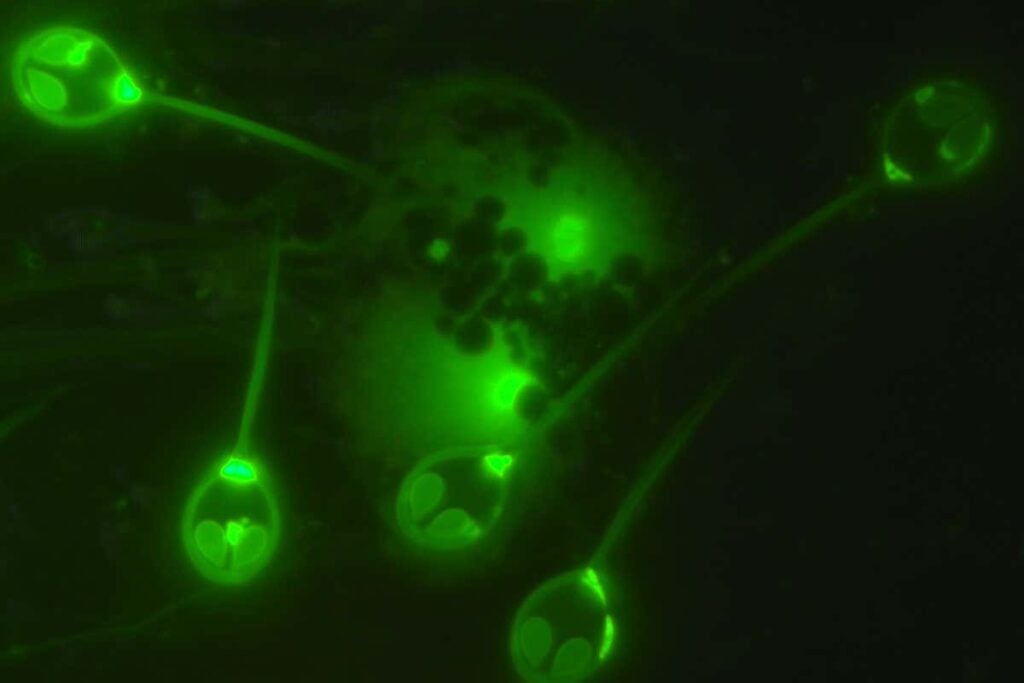In a 2020 research entitled A cnidarian parasite of salmon (Myoxozoa: Henneguya) lacks a mitochondrial genome, the researchers discuss their findings on the unusual Henneguya salminicola parasite. A close relative to coral and jellyfish, the 8-millimeter parasite infects the flesh of Chinook salmon.
Unlike most living organisms, the Henneguya salminicola parasite requires no oxygen to breathe. Researchers assume it uses the readily-made nutrients from its host for energy.
The Unique Parasite
Even during our elementary days, teachers taught us that all living organisms needed oxygen to survive. Without oxygen, we cannot reproduce, grow, develop, and convert food into energy. But now, this proves to be false as researchers have just discovered Henneguya salminicola, the first known animal that doesn’t deem oxygen essential.
A 2020 study entitled A cnidarian parasite of salmon (Myxozoa: Henneguya) lacks a mitochondrial genome tackles the recent discoveries on the one-of-a-kind animal. Published under the Proceedings of the National Academy of Sciences of the United States of America, the research further proves that aerobic respiration is not present among all animals.
Eukaryotes typically require aerobic respiration, but a handful of unicellular lineages cannot perform aerobic respiration. Due to the lack of oxygen, these unique organisms have either no genome or only some genome parts, developing into MROs or mitochondria-related organelles. (Source: PNAS)
Henneguya salminicola, the research subject, is a white parasite only 8 millimeters in size that primarily infects Chinook salmon flesh. The myxozoan cnidarian parasite is closely related to more known animals, such as corals and jellyfish. The Henneguya salminicola remains unable to accomplish aerobic cellular respiration because its mitochondrial genome is absent. The continued survival of the parasite is an indicator that not every animal has central eukaryotic features. (Source: CNN)
Our analyses suggest that H. salminicola lost not only its mitochondrial genome but also nearly all nuclear genes involved in transcription and replication of the mitochondrial genome. In contrast, we identified many genes that encode proteins involved in other mitochondrial pathways and determined that genes involved in aerobic respiration or mitochondrial DNA replication were either absent or present only as pseudogenes.
Proceedings of the National Academy of Sciences of the United States of America
(Source: PNAS)
How does the Henneguya salminicola Survive Without Oxygen?
In a CNN article, Stephen Atkinson, one of the co-authors of the research and senior research associate at Oregon State University, explains how the Henneguya salminicola survives by consuming ready-made nutrients from its host rather than breathing oxygen. Atkinson further states that since the environment inside the salminicola‘s host is scarce of oxygen, the parasite survived by losing its mitochondrial genome.
By losing the genome, the parasite is saving energy by not having to copy genes for things it no longer needs.
Stephen Atkinson
With that said, researchers still cannot figure out what the Henneguya salminicola depends on as an alternative to oxygen. Atkinson only assumes that it gets the readily-made energy from its host.
Researchers have stated that the parasite does not prove to be harmful to its hosts and that it cannot infect humans. The findings they’ve acquired from thoroughly studying the unusual parasite give a more extended definition to the term animal. (Source: CNN)
